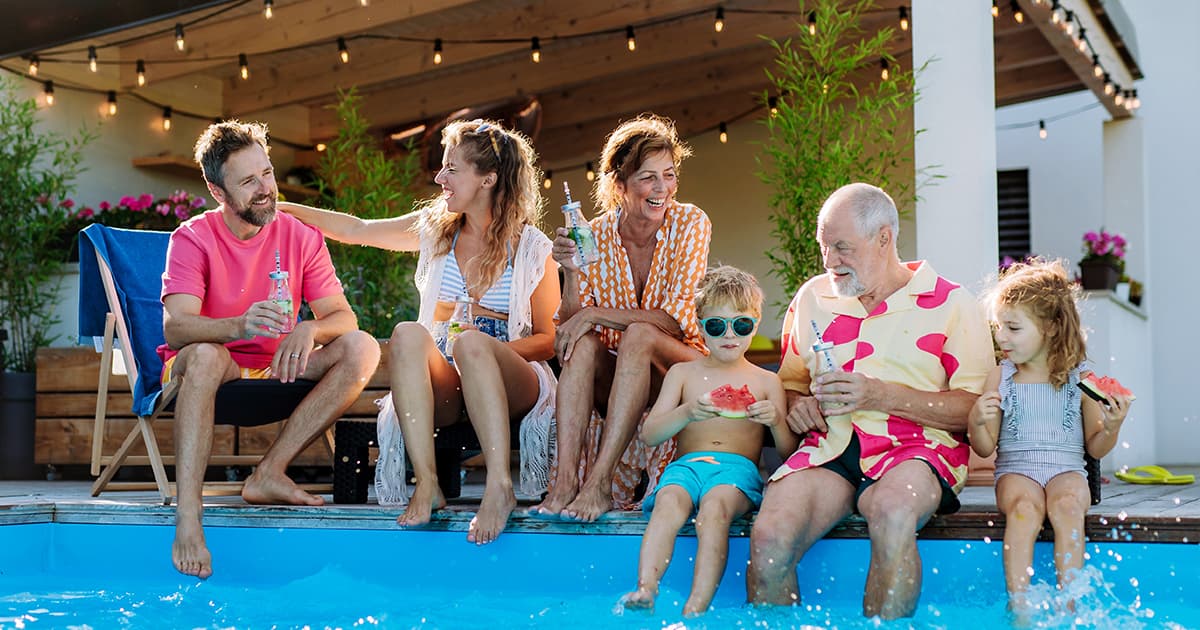How to Make Your Back Yard Pool Safe

A back yard pool is the ultimate fun summer activity for kids. But you need to know the risks and establish rules so they can stay safe when using your pool or hot tub.
Back yard pool safety tips from the Lifesaving Society
According to the Lifesaving Society, basic swimming ability is essential for eliminating drowning in Canada. They offer training programs for everything from learning how to swim to advanced lifesaving. Courses on leadership and lifeguarding are also available. For more information about the Lifesaving Society and available classes, visit their website here: Lifesaving Society | Backyard Pools
Lifesaving Society points out these facts about back yard pool safety:
- Drowning is fast and silent, unlike what we imagine and see in movies.
- Back yard pools are the most common place where children under 5 drown.
- Most back yard pools are too shallow for diving safely.
- Each municipality has its own bylaws regarding fencing and pools.
The Life Saving Society suggests these back yard pool safety tips:
- Stay within arms’ reach of children under 5 when they are around or in water.
- An adult should always be appointed to supervise children around a back yard pool.
- Use the Lifesaving Society’s Backyard Pool Safety Inspections Guidelines with the Backyard Pool Checklist.
- Restrict and control access to a back yard pool with a 4-sided fence and latching gate.
Back yard pool safety tips from the Canadian Red Cross
The Canadian Red Cross also offers useful back yard pool safety information and you can learn more by visiting their website here: Backyard Pools - Canadian Red Cross
The Canadian Red Cross suggests these safety measures:
- Refer to your local bylaws for requirements for building a fence around your back yard pool. It is recommended that the fence is at least 1.2 m high with gaps of 10 cm or less and with a self-closing and self-latching gate.
- Have swimmers enter the water feet first.
- Create pool rules like having an adult present, swimming with a friend, and not having glass containers near the pool.
- Keep the deck free of debris and toys.
- Have an accessible first aid kit, phone, and reaching or throwing assists.
- Create an action plan that includes adult supervision, safety equipment, an emergency signal and emergency procedures.
- Hot tubs should not exceed 104 degrees Fahrenheit or 40 degrees Celsius.
- Small or portable pools should be emptied, and above-ground pools should have ladders removed when not in use.
- Drugs and alcohol must not be consumed near the pool.
- Never leave children unattended. Most children who drown do so when their caregiver is distracted.
- Lifejackets or Personal Flotation Devices should be worn by non-swimmers and weak swimmers.
- Children and adults should take Red Cross swimming lessons.
- Take a Red Cross First Aid Course and enroll youth in a Red Cross Lifeguard Course.
- Stay out of the pool when there is thunder and lightning and at night.
- Use sunscreen even on cloudy days and re-apply it every 3-4 hours.
- Wear a hat, sunglasses, and light clothing over your skin when possible.


.jpg?300x300)
